by Ashley Carter
Share
As we step into a new year, laboratory managers face a critical decision: continue operating with legacy systems or invest in technologies that can transform operational efficiency. In an era of increasing complexity, rising costs, and ever-more-demanding performance expectations, a Laboratory Information Management System (LIMS) has emerged as more than just a technological upgrade—it’s a strategic imperative.
Today’s laboratories are expected to do more with less: reduce costs, ensure compliance, optimize resources, accelerate results, and maintain the flexibility to adapt to rapidly changing scientific landscapes. The right LIMS doesn’t just manage information; it becomes a catalyst for laboratory transformation, turning operational challenges into competitive advantages.
This article explores five compelling, budget-wise reasons why investing in a LIMS isn’t an expense, but a strategic investment that can fundamentally reshape your laboratory’s performance and potential.
Reason 1: Reduced Operational Costs
In today’s competitive laboratory landscape, operational efficiency is more than just a buzzword—it’s a critical driver of success. Manual data entry represents a significant hidden cost that plagues many laboratories. Beyond consuming valuable staff time that could be spent on critical testing and analysis, manual processes introduce a cascade of potential errors that can derail productivity and compromise data integrity.
A Laboratory Information Management System (LIMS) transforms this scenario by addressing core operational inefficiencies. Through direct instrument interfacing, LIMS eliminates the risk of transcription errors, ensuring data accuracy from source to report. Standardized test specification templates allow laboratories to define complex test requirements once, then apply them consistently across all workflows. This approach not only reduces human error but also creates a repeatable, reliable process that can significantly lower operational costs.
Key benefits include:
- Elimination of manual data entry time
- Reduced risk of costly data transcription errors
- Consistent application of testing specifications
- Improved overall laboratory productivity
Reason 2: Enhanced Regulatory Compliance
For laboratories operating in regulated industries, compliance is not optional—it’s existential. Audit preparedness can mean the difference between maintaining critical certifications and facing potentially business-threatening findings. Traditional manual documentation methods leave laboratories vulnerable to inconsistencies, incomplete records, and compliance gaps.
A robust LIMS serves as a comprehensive compliance management system. By providing automated audit trails, role-based access controls, and immutable change logs, LIMS creates a transparent, traceable environment that meets the most stringent regulatory requirements. Features like automated reporting, status-based data controls, and comprehensive documentation tracking transform compliance from a burden to a streamlined process.
Critical compliance advantages include:
- Comprehensive, automated audit tracking
- Role-based security preventing unauthorized data modifications
- Automated reporting for swift audit responses
- Guaranteed data integrity and process control
Reason 3: Improved Resource Allocation
Resource management represents a critical challenge for modern laboratories. Traditionally, capacity planning and resource utilization have been driven by intuition and manual tracking—an approach that leaves significant optimization potential unrealized. A sophisticated LIMS turns resource allocation from a guessing game into a data-driven strategy.
By capturing and analyzing every operational metric in real-time, LIMS provides laboratory managers with unprecedented visibility into their operational landscape. Dynamic dashboards transform raw data into actionable insights, enabling precise resource allocation, accurate capacity planning, and strategic decision-making. This data-centric approach allows laboratories to maximize personnel efficiency, optimize equipment utilization, and identify potential bottlenecks before they impact productivity.
Resource optimization highlights:
- Real-time operational analytics
- Data-driven capacity planning
- Comprehensive workflow visualization
- Strategic resource allocation strategies
Reason 4: Accelerated Time-to-Results
In laboratory environments, time is more than just a metric—it’s a competitive advantage. Manual process management creates inherent delays, transforming laboratories from value generators to bottlenecks. A modern LIMS reimagines laboratory workflow, converting time-consuming administrative tasks into streamlined, automated processes.
By reducing manual data entry, automating report generation, and creating intuitive review workflows, LIMS dramatically accelerates result delivery. These efficiencies don’t just save time—they create opportunities. Laboratories can expand testing capabilities, reduce turnaround times, and potentially become strategic enablers for broader organizational goals.
Time optimization benefits:
- Significant reduction in administrative overhead
- Automated report generation
- Streamlined review processes
- Increased laboratory throughput and responsiveness
Reason 5: Scalability and Future-Proofing
Laboratory growth is rarely linear. Changing regulations, evolving testing methodologies, and expanding organizational needs demand a technological foundation that can adapt without constant reinvestment. Spreadsheets and manual systems quickly become obsolete, creating technical debt and operational friction.
A truly configurable LIMS provides the flexibility modern laboratories require. By enabling users to create custom fields, design new tests, and implement automation without deep technical expertise, LIMS becomes a dynamic platform that grows alongside your laboratory. This approach ensures that your technological investment remains relevant, reducing long-term costs and maintaining operational agility.
Scalability advantages:
- User-configurable system architecture
- No requirement for extensive programming knowledge
- Adaptive to changing laboratory needs
- Continuous alignment with organizational growth
Conclusion
The landscape of laboratory management is evolving at an unprecedented pace. What was considered innovative five years ago is now the baseline for operational excellence. A LIMS represents more than a technological solution—it’s a strategic partner in your laboratory’s journey toward maximum efficiency, compliance, and competitive advantage.
By addressing core operational challenges—from reducing manual errors to enabling data-driven decision-making—a LIMS transforms laboratories from cost centers to strategic assets. The five reasons we’ve explored demonstrate that the right LIMS is not an expense to be minimized, but an investment to be maximized.
Discover Wavefront LIMS: Your Laboratory’s Path to Transformation
Wavefront LIMS goes beyond the benefits outlined in this article. Our solution is purpose-built to address the unique challenges faced by modern laboratories. With intuitive configuration, seamless instrument integration, and advanced analytics, Wavefront LIMS turns your laboratory’s data into your greatest strategic asset.
Ready to see how Wavefront can revolutionize your laboratory operations? Schedule a personalized demo today and explore:
- Custom configuration tailored to your specific laboratory needs
- Advanced analytics and reporting capabilities
- Seamless regulatory compliance tools
- Scalable solutions that grow with your laboratory
As you review your laboratory’s budget and strategic priorities for the year ahead, consider the holistic value a LIMS can deliver. It’s not just about managing information; it’s about unlocking your laboratory’s full potential.
Don’t let another year pass with suboptimal laboratory management. Book your Wavefront LIMS demo now and take the first step towards a more efficient, compliant, and competitive laboratory.
STAY IN THE LOOP
Subscribe to our Free Content
Learning about LIMS is a monthly article series where Wavefront shares questions that have come up throughout our interactions with a range of individuals and customers. We do our best to provide information about each topic to help people learn more about LIMS.
Sign up here to be added to our mailing list and receive these articles directly in your inbox.
In today's rapidly evolving laboratory environment, effective data management has become increasingly crucial for maintaining operational excellence and competitive advantage. Modern laboratories generate an unprecedented variety of data types, each requiring specific handling protocols and storage considerations. A robust Laboratory Information Management System (LIMS) serves as the cornerstone of efficient laboratory operations, providing comprehensive solutions for data complexity, regulatory compliance, and long-term data integrity while ensuring seamless workflow integration.
Laboratory staffing shortages have become a critical challenge across industries. Learn how LIMS features and automation helps laboratories maintain high standards and increase efficiency, even with reduced personnel. Wavefront LIMS provides comprehensive solutions for workflow automation, knowledge transfer, and staff development - enabling your laboratory to thrive despite staffing constraints.
In an increasingly competitive and regulated laboratory environment, implementing a robust Sample Management Software solution is essential for driving operational excellence. A comprehensive Laboratory Information Management System (LIMS) streamlines sample tracking, enhances data integrity, facilitates compliance adherence, and unlocks powerful analytics for continuous improvement. Discover how to harness the transformative potential of LIMS to position your laboratory for long-term success.
Efficiently logging work into a Laboratory Information Management System (LIMS) can greatly enhance lab operations by automating routine tasks, minimizing errors, and ensuring compliance with testing standards. In this article, we explore how features like automated sampling plans, pre-configured templates, and real-time traceability help laboratories streamline their workflows, meet regulatory requirements, and improve productivity. Discover how logging work into LIMS can transform your lab’s performance and keep you competitive.





